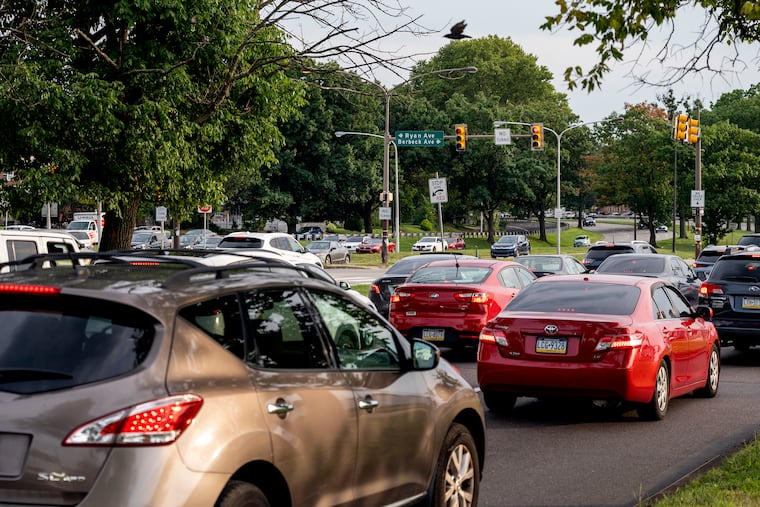A Roosevelt Boulevard subway got an airing in a public meeting. The idea seems to have momentum.
First proposed in 1913, a Roosevelt Boulevard subway has been studied multiple times.

Northeast Philadelphians have heard about the Roosevelt Boulevard subway for so long it’s become a kind of dog-eared civic myth. It’ll never happen, many have figured.
“It’s always been floating in the ether here,” said Dan Trubman, a transit advocate whose father grew up in the Northeast. “The subway seems to come up every 20 years.”
On Saturday, about 150 people gathered in the PATH center at Cottman and Castor Avenues for a community discussion about the possibility of building rapid transit in the Northeast, an idea gaining new momentum two decades after the city last seriously considered it.
Proponents say the time is right, with mounting focus on transportation equity and climate change, along with the biggest federal investment in infrastructure and transit in more than a generation.
Jay Arzu, a doctoral student who moved to Philadelphia from New York last summer, has been building a coalition of elected officials and community leaders to consider building a Roosevelt Boulevard rail line.
» READ MORE: The longed-for Roosevelt Boulevard subway is drawing new interest. Could it happen?
“I realized early on there was a major transportation inequity in this section of the region,” said Arzu, 30, studying for a Ph.D. in urban and regional planning at the University of Pennsylvania. In short, he said, the Northeast isn’t well-connected to the rest of the city by transit, and that holds back its growth and economic development.
“When I started working in Center City in my 20s, it took 45 minutes by bus to get there,” said Susan Kramer, a Northeast resident for 44 years. “Now it takes a lot longer. Nothing around here is connected well.”
State Rep. Jared Solomon (D., Philadelphia), who represents part of the Northeast and hosted the meeting, noted that improvements have been made, including the Boulevard Direct bus service, which provides frequent service with fewer stops. But for many regular bus routes, a ride to Center City can take up to two hours during the morning rush, he said.
“That’s unacceptable,” Solomon said. “We deserve to have better transit here.”
A 2003 study for the city and SEPTA estimated a subway-elevated line, running in the median of Roosevelt Boulevard, would provide a 33-minute ride from Southampton Road in Somerton to Center City.
The 2003 analysis estimated such a line would carry 124,000 riders a day — and cost $3.4 billion to build. At the time, that was considered prohibitive, but in today’s dollars it would cost about $7 billion, if construction started right away.
The Boulevard is Northeast Philadelphia’s main artery, and one of the nation’s deadliest roads. Speed-enforcement cameras and other changes have reduced average speeds on the thoroughfare. But rapid transit — combined with pedestrian improvements — would take vehicles off the road, reducing congestion and crashes, supporters at the meeting said.
First proposed in 1913, a Roosevelt Boulevard rapid-transit rail line has been proposed and studied multiple times. A subway was considered so inevitable in the 1960s that a station was built beneath a massive Sears complex at Whitaker and Adams, but it was razed in 1994.
Even though federal transportation money is flowing more freely than in a long time, there is national competition for the funding and it takes years to get plans for a big infrastructure project like a rail system in the pipeline.
A Roosevelt Boulevard rail line is not in SEPTA’s capital plans at this point. The agency has been noncommittal but open to discussions.
Most of the dozens of speakers said they favored a subway or an elevated monorail line. Some expressed frustration that SEPTA continues to press forward with a $2.2 billion extension of the Norristown High Speed Line to King of Prussia, which has been projected to draw 9,000 riders a day after five years. One man said 11 bus routes in the SEPTA network carry more people.
“Why did that project get to where it is?” said Christopher M. Puchalsky, director of policy and strategic initiatives in the city’s Office of Transportation, Infrastructure and Sustainability.
“It’s because they built a coalition and that coalition stayed together for 20 years,” he said. “The business community … elected county, state, and federal leaders, they were all for it. It was their priority.”
It’s going to take much more discussion and consensus-building to bring a game-changing transit project to the Northeast, Solomon said. “It’s a matter of political will.”